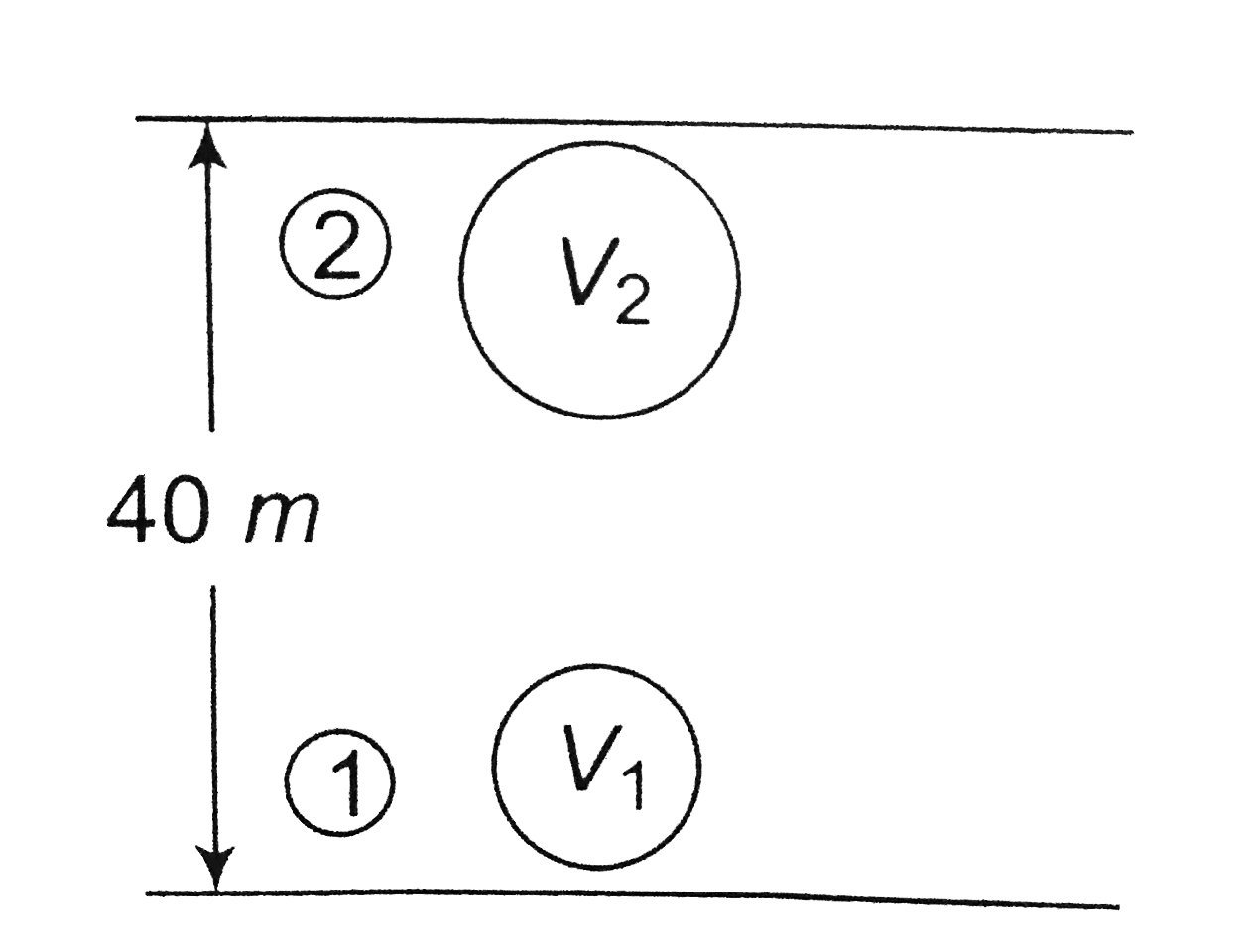The temperature at the bottom of a 40cm deep lake is 12∘C and that at the surface is 35∘C. An air bubble of volume 1.0cm3 rises from the bottom to the surface. Its volume becomes (atmospheric pressure =10m of water)
2.0cm3
3.2cm3
5.4cm
8.0cm3
The correct Answer is:C

P1=Patm+Pwater=10+40=50m of water
V1=1cc,T1=12+273=285K
P2=Patm=10m of water
V2=?,T2=35+273=308K
Since number of moles in the bubble remains same
P1V1RT1=P2V2RT2
50×1285=10V2308⇒V2=5.4cm3
Topper's Solved these Questions
Similar Questions
As an air bubble rises from the bottom of a lake to the surface, its volume is doubled. Find the depth of the lake. Take atmospheric pressure = 76 cm of Hg.
View SolutionAn air bubble starts rising from the bottom of a lake. Its diameter is 3.6mm at the bottom and 4mm at the surface. The depth of the lake is 250cm and the temperature at the surface is 40∘C. What is the temperature at the bottom of the lake? Given atmospheric pressure = 76cmofHgandg=980cm/s2.
View Solution
Knowledge Check
- Question 1 - Select One
A bubble rises from the bottom of a lake 90m deep on reaching the surface, its volume becomes (take atmospheric pressure equals to 10m of water)
A4 timesB8 timesC10 timesD3 times - Question 2 - Select One
At the bottom of a lake where temperature is 70C the pressure is 2.8 atmosphere. An air bubble of radius 1cm at the bottom rises to the surface. Where the temperature is 270C. Radius of air bubble at the surface is
A31/3B41/3C51/3D61/3 - Question 3 - Select One
An air bubble starts rising from the bottom of a lake. Its diameter is 3.6 mm at the bottom and 4 mm at the surface. The depth of the lake is 250 cm and the temperature at surface is 40∘C. What is the temperature at the bottom of the lake? Given atmospheric pressure = 76 cm of Hg and g=980cm/s2
A11∘CB12.36∘CC13∘CD10.37∘C
(a) A spherical tank of 1.2m radius is half filled with oil of relaive density 0.8. If the tank is given a horizontal acceleration of 10m/s2. Calculate the inclination of the oil surface to horizontal and maximum pressure on the tank.
(b) The volume of an air bubble is doubled as it rises from the bottom of a lake to its surface. If the atmospheric pressure is Hm of mercury & the density of mercury is n times that of lake water. Find the depth of the lake.View SolutionThe density of an air bubble decrease by x% as it raises from the bottom of a lake to tis surface. The water berometer reads H. The depth of lake is
View SolutionWhen an air bubble rise from the bottom of a deep lake to a point just below the water surface, the pressure of air inside the bubble
View SolutionAn air bubble starts rising from the bottom of a lake. Its diameter is 3.6mm at the bottom and 4mm at the surface. The depth of the lake is 250cm and the temperature at the surface is 40∘C. What is the temperature at the bottom of the lake? Given atmospheric pressure = 76cmofHgandg=980cm/s2.
View SolutionRadius of an air bubble at the bottom of the lake is r and it becomes 2r when the air bubbles rises to the top surface of the lake. If P cm of water be the atmospheric pressure, then the depth of the lake is
View Solution

